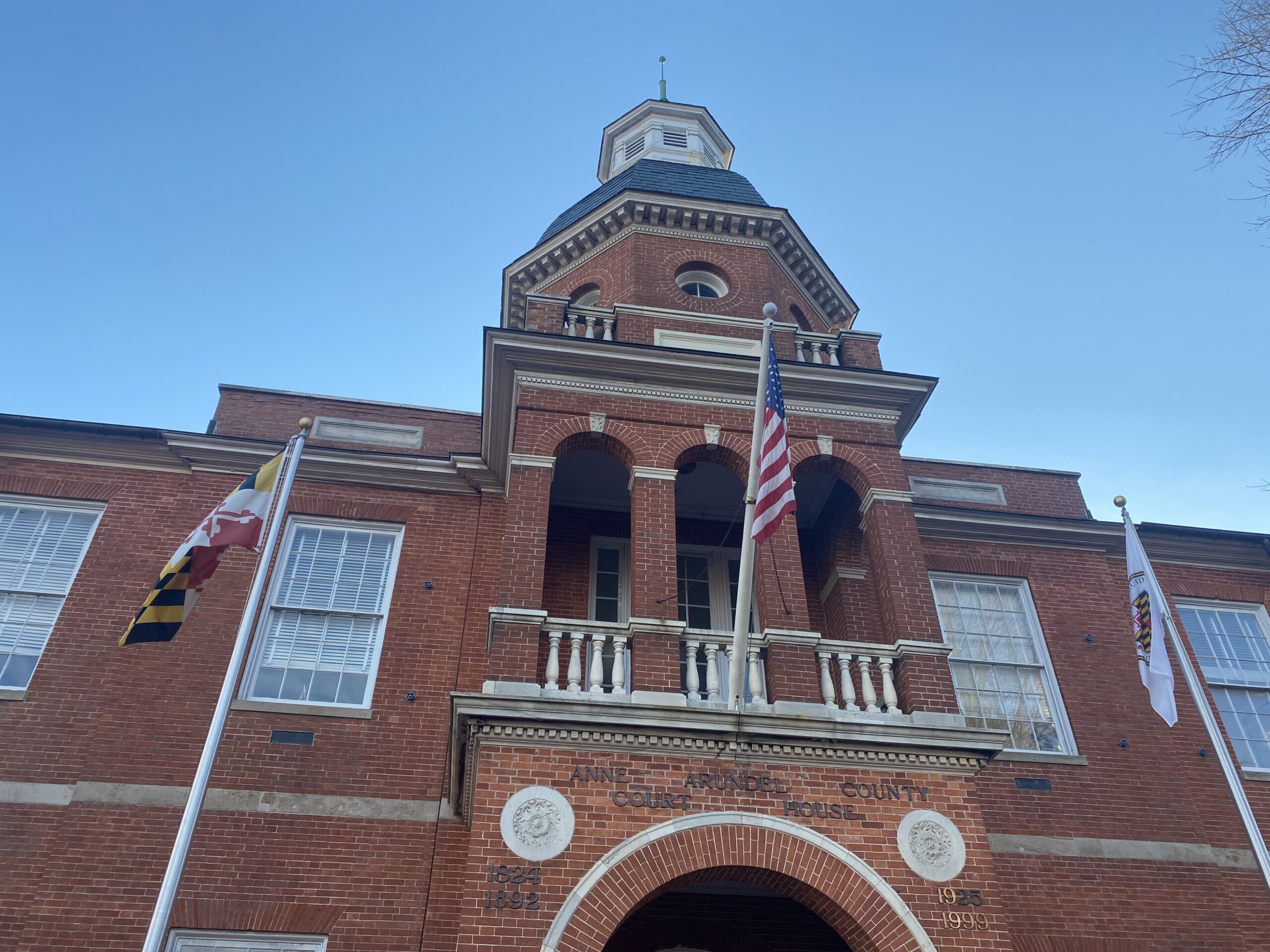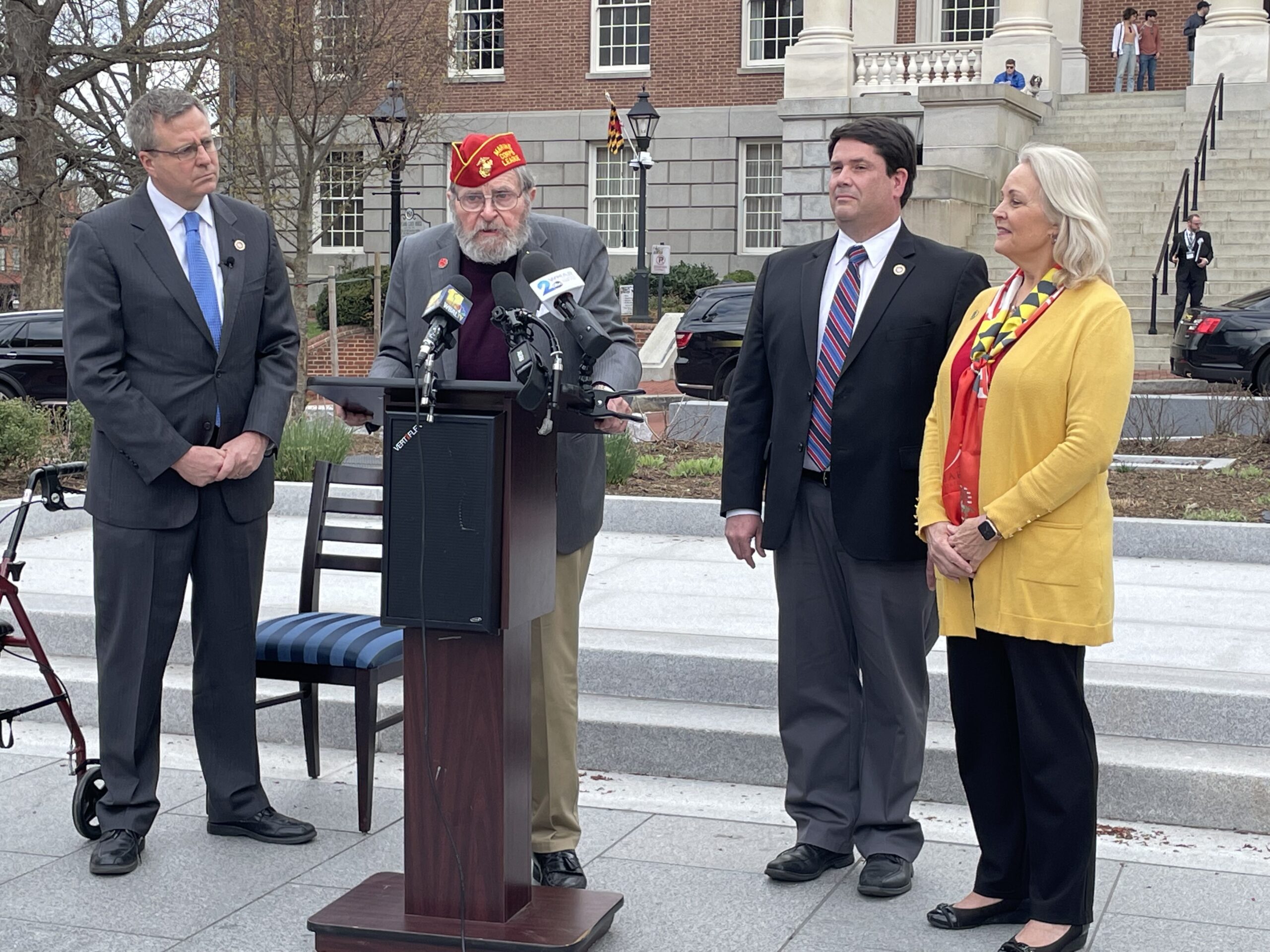Congressional Redistricting Trial Continues as Experts for Plaintiffs Wrap up Testimony

Legal challenges to Maryland’s congressional district map will continue after a judge in Anne Arundel County Circuit Court denied the state’s claim that the plaintiffs hadn’t proven their case.
Solicitor General Steven M. Sullivan argued Wednesday afternoon that the plaintiffs failed to show they would be personally injured by the new map and also failed to present a standard under Maryland law where the map could be thrown out due to partisan considerations.
Senior Judge Lynne A. Battaglia denied Sullivan’s motion, noting that both of the plaintiffs’ witnesses spoke about potential adverse affects the map could have on Republican voters.
Strider Dickson represents eight Republican voters challenging the state’s congressional map, all of whom say they intend to vote for Republicans in the future and charge that they’ve been disempowered by the new map passed by the General Assembly in December.
The trial kicked off Tuesday, and has included testimony from a pair of political analysts who said Maryland’s new congressional districts are not compact and dilute the power of Republican voters. The plaintiffs rested their case Wednesday after their experts wrapped up, and the trial is expected to run through Friday.
Two challenges against Maryland’s new congressional map have been consolidated for the trial in the Anne Arundel County Circuit Court. One lawsuit, Szeliga v. Lamone, is brought by Republican voters from all eight of Maryland’s congressional districts and contends that the new map violates the state constitution by intentionally diluting Republican votes. The other lawsuit, brought by Del. Neil C. Parrott (R-Washington) and the national conservative group Judicial Watch, also contends that the new map violates Article III, Section 4 of the Maryland Constitution.
That provision, which has historically been interpreted to apply to legislative districts and not congressional ones, requires that “each legislative district be compact in form, and of substantially equal population. Due Regard shall be given to natural boundaries and political subdivisions.”
The plaintiffs witnesses — RealClearPolitics Senior Elections Analyst Sean Trende and Thomas Brunell, a political scientist and professor at the University of Texas at Dallas — spoke at length about the new map on Tuesday and Wednesday respectively. Both said they analyzed the map and found that the new congressional districts are non-compact and favor Democrats over Republicans.
Trende testified Tuesday that Republican voters were removed from the 1st Congressional District with “almost surgical precision” in the new map. That district previously included heavily Republican areas in northern Maryland with the Eastern Shore, but was redrawn to cross the Chesapeake Bay Bridge to include portions of Anne Arundel County, making the district more competitive for Democrats.
“Under any definition of extreme gerrymandering, it fits the bill,” Trende said Tuesday.
In arguing that the plaintiffs hadn’t proved their case at the end of testimony on Wednesday, Sullivan said they would need to prove that lawmakers specifically intended to disempower Republican voters in crafting the map. But Battaglia questioned whether such a standard would be necessary.
“It may be sufficient here to prove adverse impact,” she said.
As to Sullivan’s charge that the plaintiffs failed to show an existing standard in Maryland law that would allow her to throw out the congressional map, Battaglia called the trial a “case of first impression.”
Both lawsuits focus on state law rather than federal law after the U.S. Supreme Court opted not to weigh in on state-level partisan gerrymandering in Benisek v. Lamone, a case which centered around Maryland’s 6th Congressional District as it was drawn in 2011.
Plaintiffs in both lawsuits want the map blocked, and plaintiffs in the Parrott and Judicial Watch case want Battaglia to substitute one drawn up by the Maryland Citizens Redistricting Commission, a panel convened by Gov. Lawrence J. Hogan Jr. (R). That panel included three Republicans, three Democrats and three unaffiliated voters.
Brunell, who testified on behalf of the plaintiffs in the Judicial Watch lawsuit, said he used election results from presidential, gubernatorial and senatorial elections going back to 2012 to determine the partisan lean of districts in the enacted map. He said he found that Democrats generally won a higher share of seats than their vote share in the enacted map using those prior election results.
But Brunell’s analysis also found that, in the 2014 and 2018 gubernatorial elections, Hogan carried five of eight congressional districts in the enacted map as opposed to four of eight in the Maryland Citizens Redistricting Commission map. Brunell described those results as “outliers,” and said the Maryland Citizens Redistricting Commission map produced results that were more proportional to the partisan makeup of the state.
Robert Scott, the deputy chief of litigation for the Maryland Attorney General, noted that Brunell has served as an expert for the defense of redistricting plans drawn by Republicans in several states, including Texas and North Carolina. Brunell was considered the Trump administration’s choice to head the 2020 U.S. Census, but was criticized for his lack of experience in running an agency and history of testifying as part of the defense of Republican-drawn redistricting plans and later withdrew from consideration, according to the Dallas-based D Magazine.
Brunell also found the map drawn by the Maryland Citizens Redistricting Commission to be more compact than the enacted map, but Scott said that Brunell previously authored an article in which he wrote that counties and cities don’t necessarily suffer when split between multiple congressional districts and that county lines don’t always reflect communities of interest.
That argument was posited by House Majority Leader Eric G. Luedtke (D-Montgomery), a member of the Legislative Redistricting Advisory Commission, during a floor debate over the new congressional districts in December.
“County lines drawn by colonial surveyors 300 years ago simply aren’t an accurate reflection of how people live their lives in modern-day Maryland,” Luedkte said in December.
Brunell said that the article represents his personal opinion, but added that he’s seen local officials overwhelmingly testify that their counties and communities should be kept in a single congressional district in his work on court cases across the country. He added that the redistricting plan put forward by the Maryland Citizens Redistricting Commission shows that a more compact map is possible despite Maryland’s unusual geography. He also added that there is a difference between a county split for a “good government” reason and a county split as part of an intentional partisan gerrymander.
The congressional map adopted by lawmakers during a December special session was drawn up by the Legislative Redistricting Advisory Commission, a panel convened by Senate President Bill Ferguson (D-Baltimore City) and House Speaker Adrienne A. Jones (D-Baltimore County). Jones and Ferguson were both members of that panel, alongside two other Democratic legislative leaders and two Republican legislative leaders. The Legislative Redistricting Advisory Commission was chaired by Karl Aro, a former head of the nonpartisan Department of Legislative Services.
Democratic lawmakers argued during the December special session that, when drawing congressional districts, compliance with the federal Voting Rights Act and population equality come before compactness. Aro said at a November meeting that the Legislative Redistricting Advisory Commission aimed in their map to keep as many Marylanders in their previous districts as possible.
Former Secretary of State John T. Willis, who served as the chair of a redistricting commission for then-Governor Parris Glendening (D) in 2001, testified on Wednesday that Maryland’s new districts can be explained by population shifts and historical boundaries. Willis said that, if mapmakers start from scratch and don’t use existing districts when creating a redistricting plan, they risk “distrusting existing governmental relationships.”
As Baltimore City lost population, for example, Willis said the 3rd District — once entirely contained within the city — had to extend out into neighboring jurisdictions.
Willis added that a shift to account for population in any one district will affect the other districts, since congressional maps need to be almost exactly equal in population.
“Redistricting is a web,” Willis said. “It’s a puzzle.”



 Creative Commons Attribution
Creative Commons Attribution